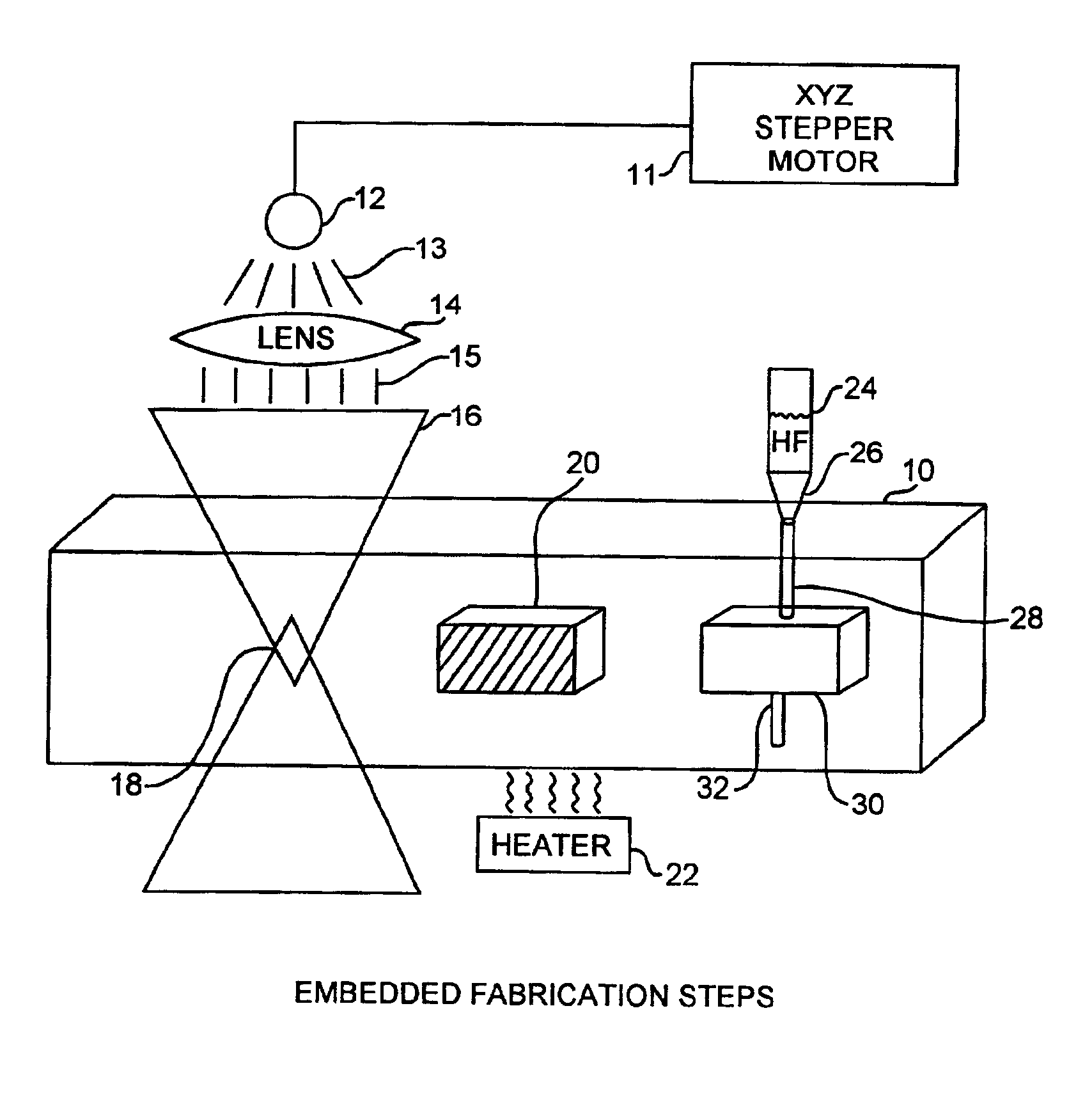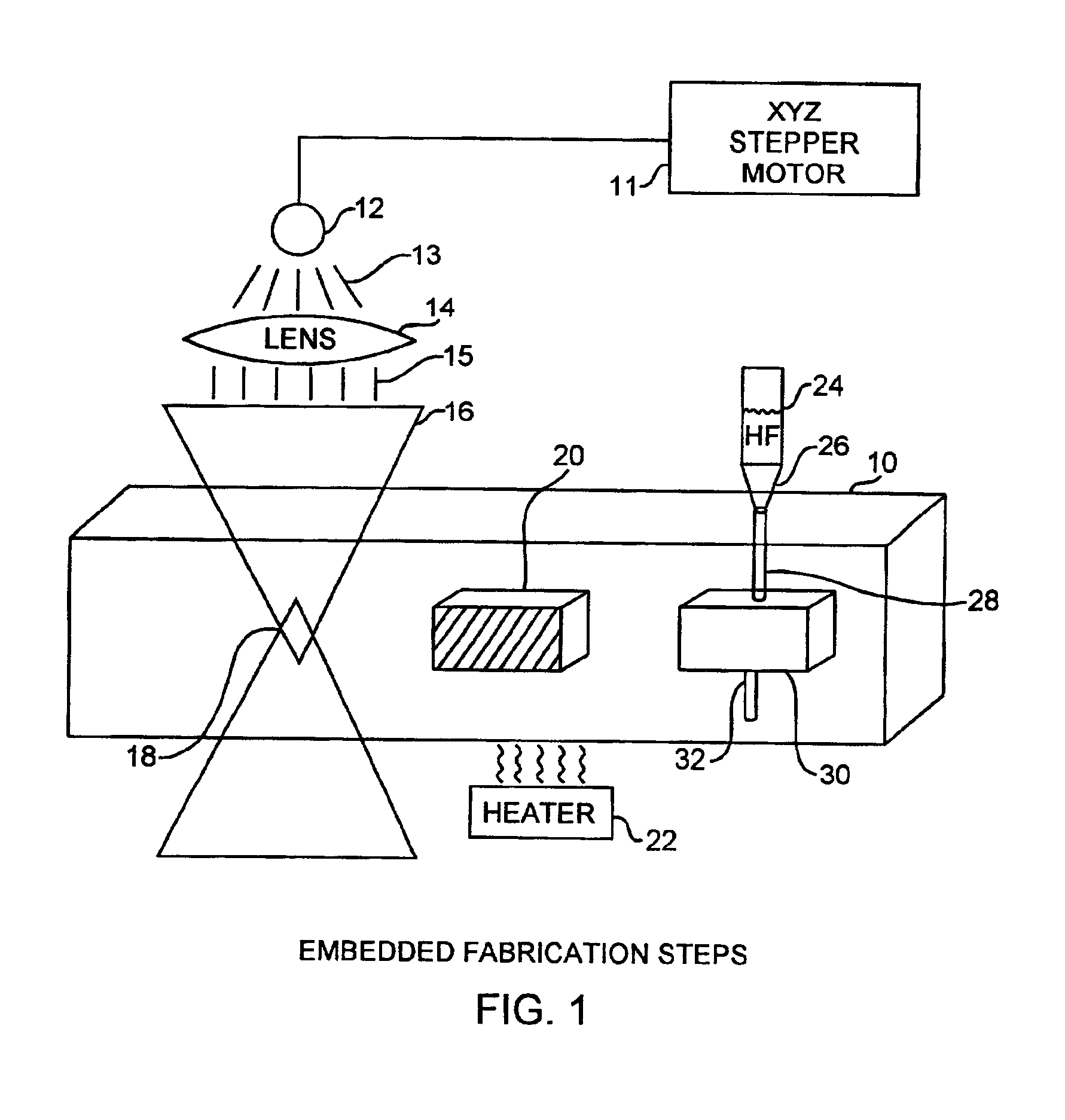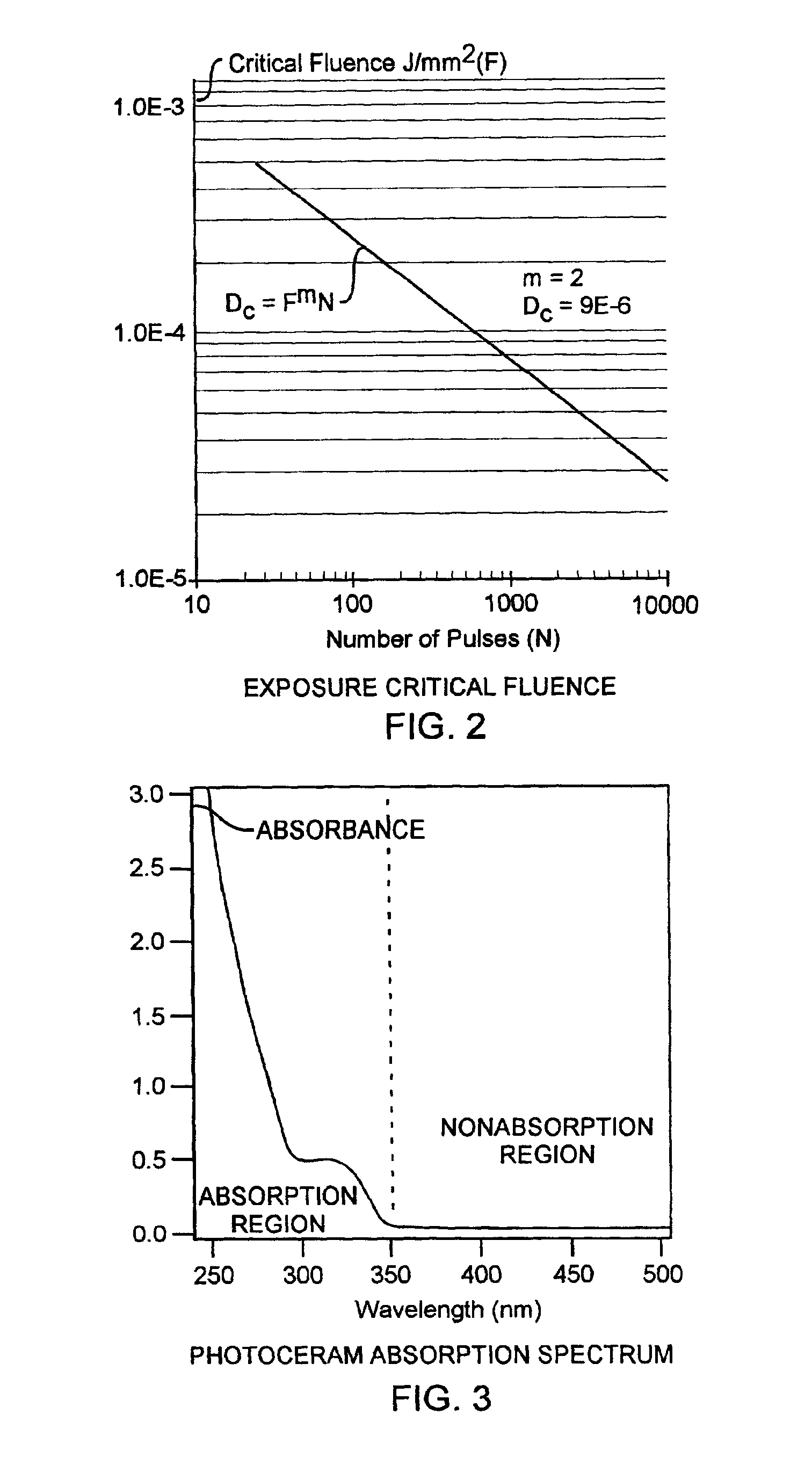Ultraviolet method of embedding structures in photocerams
a technology of photoceramics and ultraviolet light, applied in the field of microfabrication of glass ceramics, can solve the problems of not always optimal materials for use in some mems applications, the current process cannot be used to create potentially useful three-dimensional photoceramics, and the disadvantage of two-dimensional processing steps in microelectromechanical systems (mems) to form three-dimensional structures
- Summary
- Abstract
- Description
- Claims
- Application Information
AI Technical Summary
Benefits of technology
Problems solved by technology
Method used
Image
Examples
Embodiment Construction
[0017]An embodiment of the invention is described with reference to the figures using reference designations as shown in the figures. Referring to the Figures, a photoceram material sample 10 is moved using a stepper motor 11 relative to a pulsed ultraviolet (UV) laser 12 radiating pulsed laser light 13 through a microscope object lens 14 providing refracted light 15 that is focused into a focused beam 16 having a focal region 18 within the sample 10. Alternatively, the photoceram material sample 10 can remain fixed and the focused laser beam 16 can be made to move. The outcome is the same. The sample material is preferably Foturan, but other photostructurable photocerams may be used. The focal region 18 has a beam waist that partially defines a focal depth into the sample 10. The sample 10 is shown having a exposed focal volumetric region 20 through which the focal region 18 had been previously stepped. The volumetric region 20 defines a focal volume of the material that has receiv...
PUM
| Property | Measurement | Unit |
|---|---|---|
| Wavelength | aaaaa | aaaaa |
| Wavelength | aaaaa | aaaaa |
| Volume | aaaaa | aaaaa |
Abstract
Description
Claims
Application Information
 Login to View More
Login to View More - R&D
- Intellectual Property
- Life Sciences
- Materials
- Tech Scout
- Unparalleled Data Quality
- Higher Quality Content
- 60% Fewer Hallucinations
Browse by: Latest US Patents, China's latest patents, Technical Efficacy Thesaurus, Application Domain, Technology Topic, Popular Technical Reports.
© 2025 PatSnap. All rights reserved.Legal|Privacy policy|Modern Slavery Act Transparency Statement|Sitemap|About US| Contact US: help@patsnap.com



